7 exercises to reduce shin pain
Treat or prevent shin splints with these easy moves
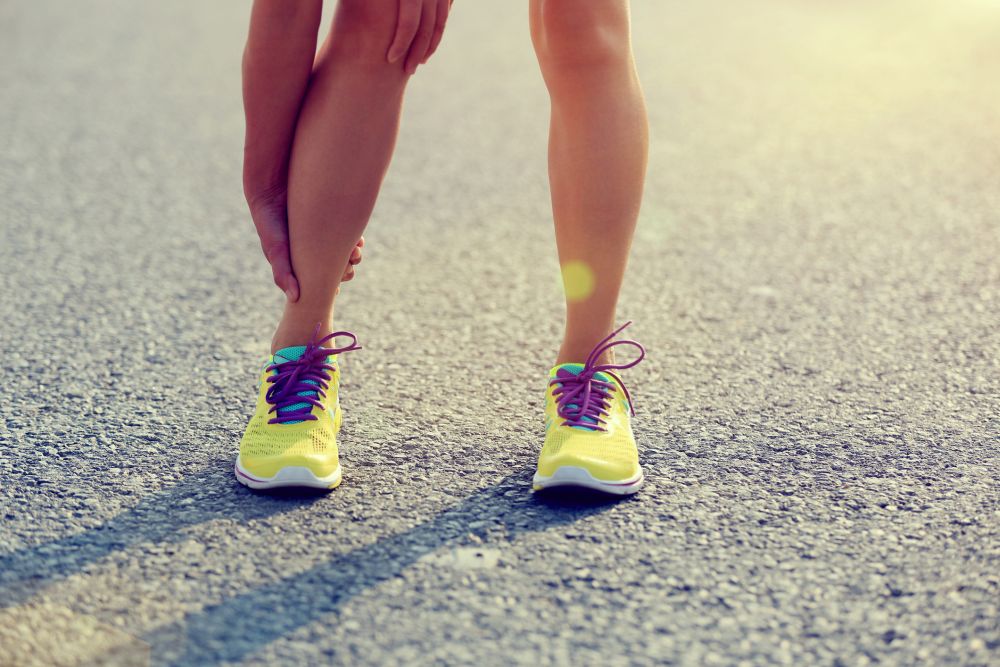
Shin splints are one of the most common running injuries, but also one of the hardest to treat. This is because the reason a runner might be experiencing shin pain can vary from person to person. On top of that, none of the research on shin splints has provided us with any consistently effective treatment (according to this study) Still, there are some exercises you can do to strengthen the muscles around your shins to help reduce or prevent shin pain. If your shins are giving you trouble, try adding these exercises into your weekly routine.
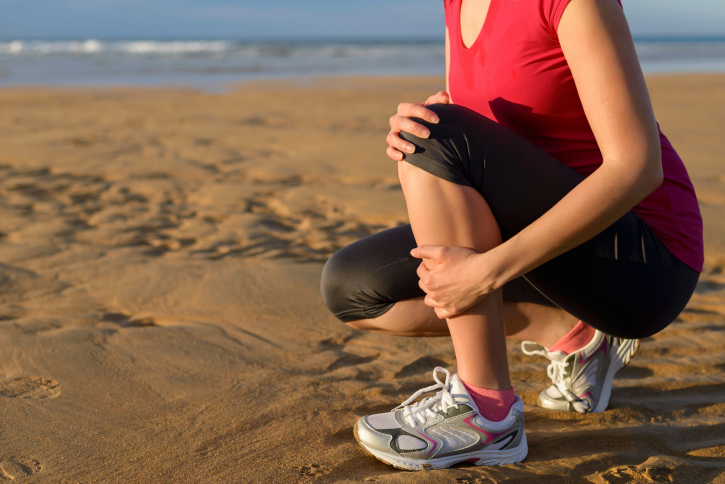
RELATED: Five balance exercises to make you a better runner
Hip hikes
Weakness in your gluteus medius (the side of your glute muscle) can increase the load on your shins and cause shin splints.
- Stand on the edge of a step
- Keeping your leg straight, hike the hip of the leg you’re not standing on into the air
- Slowly lower your hip back down and repeat 10-12 times on each side.
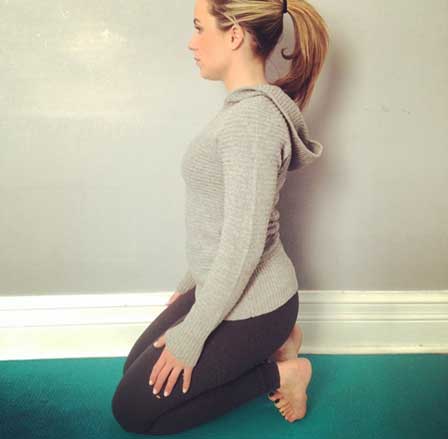
Foot stretch
Tightness in your feet can put extra stress on your shins and lead to shin splints.
- Stand with your feet together
- Crouch down onto your heels
- Drop your knees toward the floor, keeping your toes tucked under your feet, placing your hands on the floor in a tabletop position
- To increase the intensity, sit back on your heels and place your hands on your thighs. Hold the position for up to 45 seconds.
Banded ankle inversions
This exercise strengthens the muscles of the inner shin.
- Tie one end of a resistance band around something stable, like the leg of a table, and the other end around your right foot.
- Sit on the ground with your leg stretched out straight in front of you, with the table on your right. There should be enough tension on the band that it is taught.
- Use your foot to pull the band away from the table, or toward the midline of your body.
- Return to the starting position and repeat 10-12 times on each side.
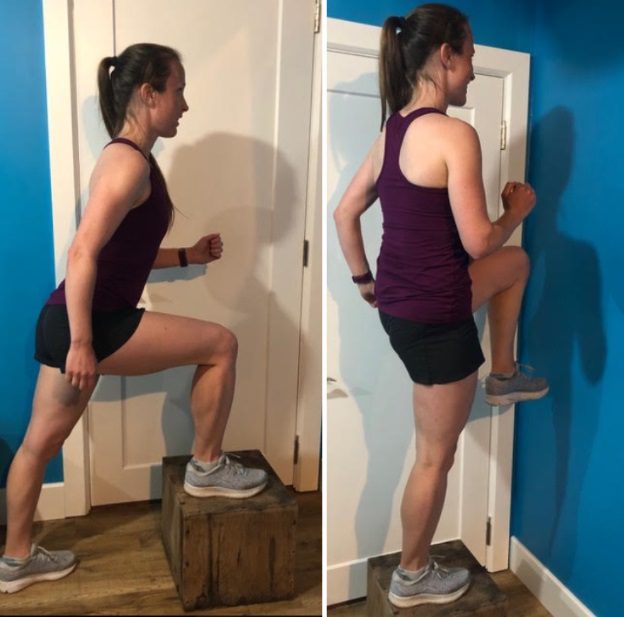
RELATED: 7 single-leg exercises for injury prevention
Step-ups
Step-ups strengthen your glutes, which are crucial for absorbing load during the stance phase of running.
- Find a step that is a few inches lower than your knees (you can progress the exercise by making the step higher)
- Place one foot on the step and stand up, driving your knee upward into the running position, being careful not to push off with your back leg.
- Slowly lower your foot back down to the ground and repeat 10-12 times on each side.
Bent-leg calf raises
This challenges the entire calf and the muscles that surround the shin, but particularly the soleus, which is important in preventing bone stress injuries.
- Stand with both feet on the floor, hip-width apart.
- Bend your knees about 30 degrees and raise your heels off the ground so you’re standing on your toes.
- Lower back down to the floor and repeat 10-12 times.
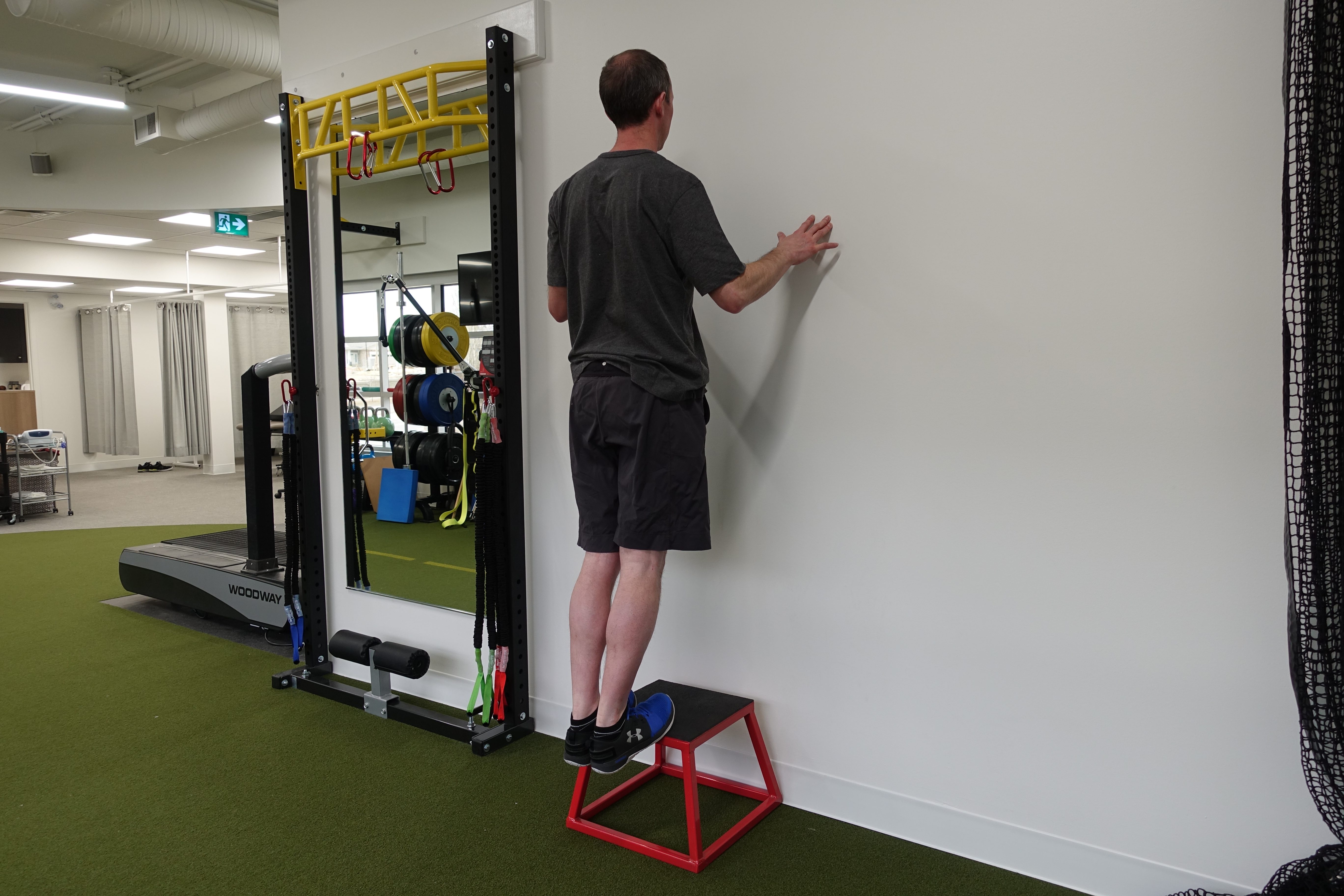
Straight-leg calf raises
This will strengthen the gastroc and the soleus, which reduces the load on your shin bone.
- Stand on the edge of a step
- Keeping your legs straight, drop your heels toward the floor.
- Push up onto your toes so that your heels are in the air.
- Slowly lower back down and repeat 10-12 times. To make these more difficult, do one leg at a time.
RELATED: Ankle mobility for injury prevention
Soleus squat
This will strengthen both the soleus and the quads, two muscles that are important for absorbing load when you’re running.
- Slide your back down a wall until your knees are bent about 80 degrees.
- Push up on your toes so your heels are in the air
- Hold for 20-30 seconds, and repeat 3-4 times


